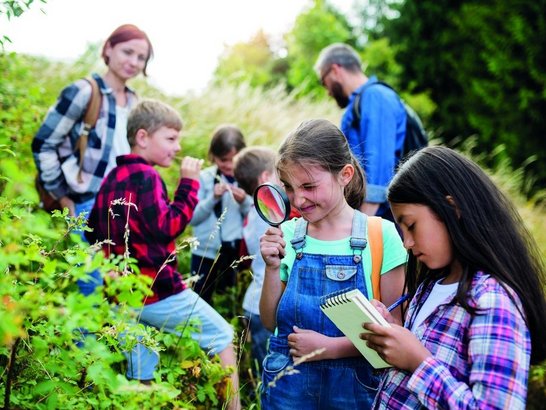Citizen Science
What do the monk Gregor Mendel, the fossil collector Mary Anning and the politician Benjamin Franklin have in common? All three are famous ‘citizen scientists’. Without having any training in their field of research, they made important scientific discoveries. Austria also has a long tradition of cooperation between science and the population, and numerous research projects have already been successfully completed with the help of co-researchers. Citizen scientists formulate research questions, report observations, carry out measurements, analyse data or write publications. This not only enables innovative research and new findings, but also facilitates an in-depth dialogue between science and society.

OeAD Center for Citizen Science
In order to deepen the dialogue between science and society, the Federal Ministry of Education, Science and Research set a clear direction in 2015 and established the OeAD Center for Citizen Science as an information, advice and service point for citizen science. Since then, the aim of the centre has been to anchor the citizen science approach in the scientific and educational landscape in order to enable participation in research. A particular focus is on cooperation between science and schools. Expertise on citizen science and science communication is built up through networking activities and events as well as lectures and workshops.

Sparkling Science
On behalf of the BMFWF, the OeAD funded 299 citizen science projects between 2007 and 2019 with the ‘Sparkling Science’ programme for young scientists, in which pupils at all school levels were actively involved in research processes. Since 2021, the follow-up programme ‘Sparkling Science 2.0’ has once again been funding projects in which scientific institutions work together with educational institutions and, if possible, partners from business and society as well as other citizen scientists. The first two calls for proposals (funding volume: EUR 21 million) have already funded 61 projects involving almost 200 schools in Austria and 67 research institutions.

RIECS-Concept
Das Projekt RIECS-Concept (Towards A Pan-European Research Infrastructure For Excellent Citizen Science) startete am 1. Januar 2025 und markiert damit den Beginn der Konzeptarbeit für eine europäische Citizen-Science-Forschungsinfrastruktur. Der OeAD bringt in das Projekt umfangreichen Erfahrungen im Bereich der Citizen Science im Bildungsbereich sowie Fachwissen über die Arbeit mit Interessengruppen ein. Das dreijährige Projekt wird durch das Forschungs- und Innovationsprogramm HORIZON EUROPE finanziert.
